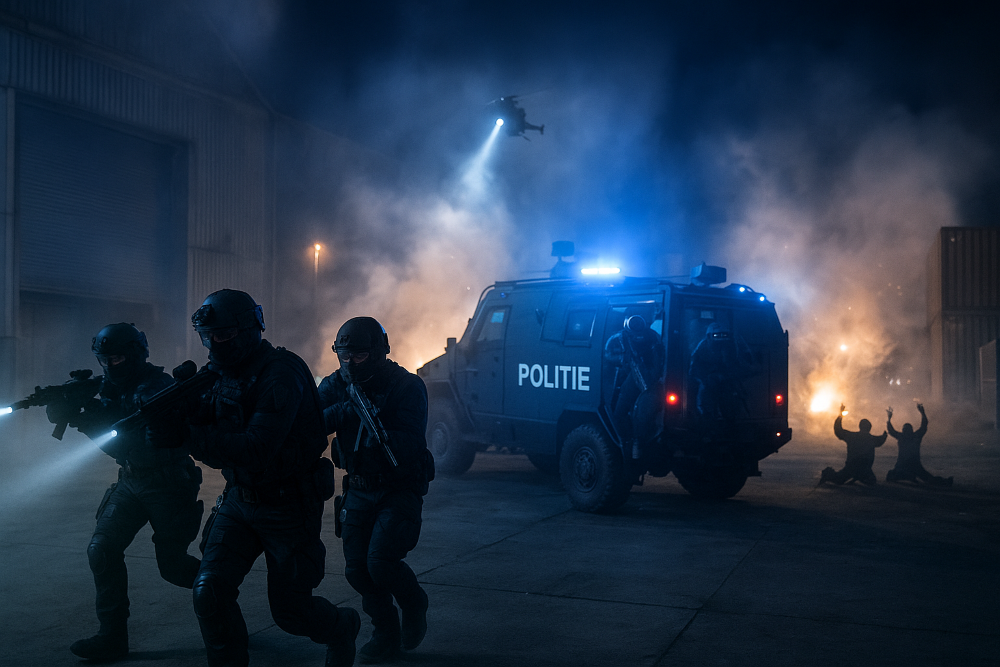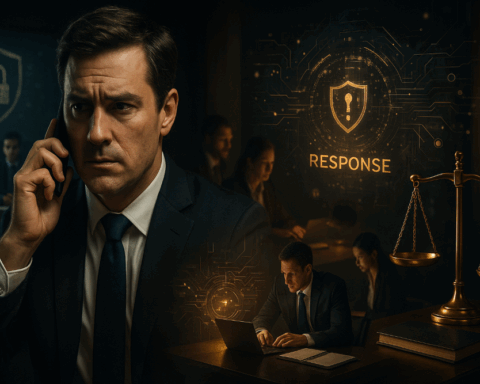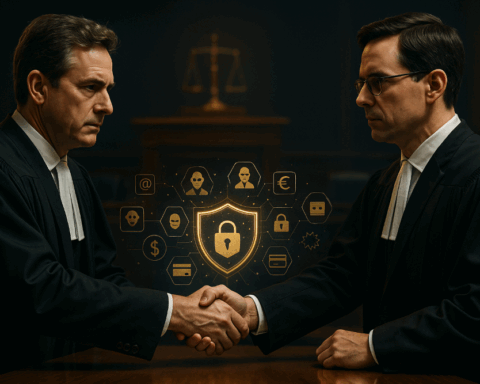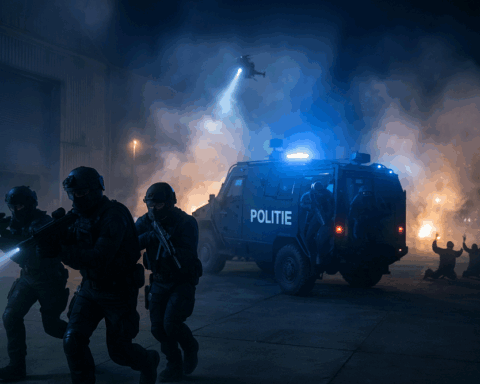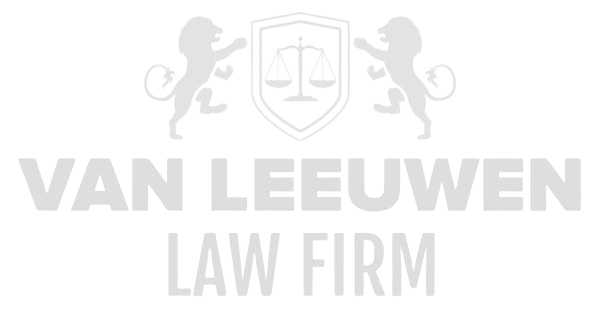Supervision of public gatherings, entertainments, and establishments constitutes a cornerstone in safeguarding public order and safety within a municipality. Article 174 of the Municipalities Act emphasizes the structural assurance of the safety of individuals and property in spaces accessible to the public, as well as at events where there is an elevated risk of disorder or other disruptions to public order. This supervision applies to both permanent and temporary establishments and encompasses a wide range of locations, from hospitality venues, theaters, and museums to festivals, fairs, and carnivals. The legal framework empowers the mayor to act preventively and repressively, ensuring that incidents, disturbances, and escalations are prevented at an early stage. The core of this authority is not merely the strict enforcement of rules but the creation of a controlled and safe environment in which citizens can participate in activities without being exposed to the risk of serious disorder or physical harm.
The importance of this supervision extends beyond the immediate protection of attendees; it also has a crucial preventive function against the undermining of the rule of law and societal trust in public events. In an era of increasing organized crime, criminal infiltration, and the risk of incidents during crowded events, the application of Article 174 of the Municipalities Act can make the difference between orderly execution and complete chaos. It provides a legal framework that enables measures to be imposed that are both proportionate and effective. These measures may range from access controls, behavioral regulations, and deployment of security personnel to the temporary closure of establishments or the termination of events. The exercise of this authority must always consider proportionality, subsidiarity, and compliance with higher legislation, requiring continuous evaluation between prevention, intervention, and the interests of the citizens involved.
Authority of the Mayor
Under Article 174 of the Municipalities Act, the mayor possesses broad authority to supervise all buildings and premises open to the public. This authority extends to taking measures necessary to safeguard the safety and health of attendees. In practice, this means that the mayor has both preventive and repressive tools at disposal, including issuing orders, temporarily closing establishments, and regulating opening hours. The authority is closely linked to other legal provisions, such as Article 172 of the Municipalities Act, which governs the general maintenance of public order, and Article 125 paragraph 3 of the Municipalities Act, which allows for administrative enforcement. The concept of supervision, as defined in Article 5:11 of the General Administrative Law Act (Awb), serves as a guideline, while proportionality and equity of measures are strictly ensured by Articles 3:4 and 3:46 Awb.
The exercise of this authority is always subject to a careful assessment of the situation on site. The mayor must have access to all relevant information to determine whether intervention is necessary, and the chosen measure must be adequate to achieve the intended goal of safety and order. Administrative decisions must be carefully motivated and recorded in writing to ensure legal protection for those involved. In addition, the mayor may apply local rules through the General Local Ordinance (APV), while the autonomy of the municipality, enshrined in Article 124 of the Constitution, adds an extra dimension to the execution of this authority.
In cases where undermining activities, such as criminal involvement in events or organized fraud in the operation of public establishments, are present, Article 174 of the Municipalities Act provides an essential instrument for immediate intervention. The mayor and enforcing authorities can impose preventive measures and correct violations before damage occurs or the integrity of the event is compromised. The authority is designed not only to enforce rules but also to play a proactive role in minimizing risks arising from non-compliance or criminal activity within public gatherings.
Scope of Supervision
The scope of Article 174 of the Municipalities Act is particularly broad and includes all buildings and premises open to the public. Supervision covers both commercial establishments, such as hospitality venues, shops, theaters, and coffee shops, and cultural and social institutions, including museums and libraries. Events such as fairs, festivals, parades, and markets also fall within the scope of the article, regardless of whether they are temporary or permanent. Even private parties within public venues may fall under the mayor’s authority if the safety or health of attendees is at stake. It is important to distinguish from demonstrations, which are protected under Article 9 of the Constitution and the Public Assemblies Act (Wom), meaning Article 174 does not apply in those cases.
In addition to maintaining public order, the scope explicitly covers health and fire safety. This requires both structural and temporary facilities to be checked for compliance with safety standards, such as maximum occupancy, emergency exits, fire extinguishers, and other preventive measures. The mayor’s authority aligns with local APV provisions and special legislation, such as the Alcohol Licensing and Catering Act, creating an integrated system for supervision and enforcement. This allows for a preventive and integrated approach to public gatherings and establishments, in which safety, health, and order are continuously monitored.
An essential aspect of the scope is the possibility of combining supervision and enforcement with other authorities. The mayor can cooperate with safety regions, police, and fire services to implement a uniform policy that minimizes risks and ensures effective intervention during incidents. This collaboration is particularly important in situations where undermining activities, such as organized crime or fraud within events, pose a real risk to public order and safety. Through this broad scope, Article 174 provides a preventive buffer against incidents while simultaneously offering a legal framework for rapid intervention when necessary measures are not voluntarily complied with.
Instruments of the Mayor
The mayor has various instruments to exercise supervision and enforcement. Orders are a core instrument, as set out in Article 174 paragraph 3 of the Municipalities Act, and may relate to adjusting behavioral rules, limiting the number of attendees, or imposing specific safety measures. Additionally, the mayor can enforce the temporary closure of establishments and halt or prohibit events, particularly when there is an acute threat to public order or the safety of attendees. Opening hours of hospitality venues may also be regulated to limit high-risk situations to manageable times and circumstances.
Administrative enforcement and fines, as set out in Article 125 paragraph 3 of the Municipalities Act and Articles 5:32 and 5:21 Awb, provide additional enforcement tools when voluntary compliance fails. These instruments enable immediate intervention and allow costs for remediation to be recovered from the violator, creating a legally enforceable framework. Emergency orders under Article 175 of the Municipalities Act and emergency regulations under Article 176 of the Municipalities Act allow for prompt action in acute situations, such as fire hazards or severe overcrowding. This also includes coordination with police and other enforcement agencies to ensure direct execution of orders.
An important feature of these instruments is their preventive effect and concurrent legal legitimacy. Explicit documentation of orders, the imposition of deadlines, and adherence to proportionality create a framework in which non-compliance can be corrected without arbitrarily impacting citizens or operators. In situations where undermining activities or criminal influences are present, this combination of instruments provides a powerful means to safeguard the safety and integrity of events and establishments.
Conditions for Intervention
The mayor’s intervention under Article 174 of the Municipalities Act is subject to strict conditions. One of the key conditions is that no other legal means are available to achieve the intended objective. Furthermore, the order must be aimed at concretely ensuring the safety or health of attendees. This means that the threat must be real and substantial, and in acute situations, immediate action is required. Written motivation is mandatory under Article 3:46 Awb to ensure transparency and judicial review, and the end date of the order must be clearly indicated.
Proportionality and subsidiarity form the core of the assessment criteria. The chosen measure must be commensurate with the severity of the threat, and less intrusive measures must be considered before applying more severe interventions. Diligence is a continuous principle; the mayor must take all relevant circumstances into account when deciding on measures and ensure that the interests of those involved are minimally restricted. Legal remedies, through objection or appeal, guarantee that the exercise of powers is neither arbitrary nor disproportionate and provide a corrective mechanism for potential excesses.
In contexts where criminal infiltration or undermining is involved, compliance with these conditions is crucial. Unjustified intervention can lead to liability, reputational damage, or inappropriate accusations against operators or organizers. At the same time, the systematic application of conditions provides a legally robust foundation for mayoral actions, ensuring that interventions against non-compliance or threats are effective, proportionate, and defensible. This strengthens trust in governance and prevents safety measures themselves from giving rise to conflict or distrust within the community.
Acute Situations
In acute situations, as regulated in Article 175 of the Municipalities Act, the mayor may intervene immediately in cases of severe disorder or imminent danger. This may include the immediate closure of a café, hall, or event in case of fire hazard, panic, or structural overcrowding. Intervention may occur without prior warning, as public protection takes absolute priority. Written documentation of the order can take place afterward, ensuring that execution is not delayed by bureaucratic procedures. Proportionality remains a guiding principle, so measures do not exceed what is necessary to avert the threat.
The instruments in acute situations are essential when undermining elements are present, such as criminal activity within events or establishments. Immediate action minimizes the risk of escalation and protects the integrity of the event or public location. The mayor may seek support from police, fire services, or other safety authorities to ensure that measures are implemented effectively and safely.
Intervention in acute situations also requires careful consideration of legal and operational aspects. Measures must be legally defensible and subject to subsequent review by the administrative court, while operationally the risk to attendees, staff, and third parties must remain minimal. In cases where operators or organizers act non-compliantly, these acute powers serve a preventive function and discourage future violations, thereby structurally reinforcing public order and safety.
Non-Acute Situations
In situations that do not pose an immediate threat, the mayor is required to adopt a more measured and procedural approach. The primary principle is voluntary compliance, giving operators and organizers the opportunity to rectify violations before more severe measures are imposed. Written notification of an order is mandatory, clearly outlining the behaviors or circumstances that triggered the intervention. This provides legal certainty for the parties involved and enhances the legitimacy of the supervision. Allowing time for a response enables operators to present their perspective and correct potential misunderstandings or administrative errors before a final enforcement action is taken.
Repeated violations, however, may result in stricter sanctions, such as closure orders or temporary revocation of permits. For example, repeatedly breaching closing hours in hospitality establishments or failing to comply with conduct rules at events may prompt the mayor to order immediate closure or operational restrictions. Administrative enforcement and penalty orders serve as additional instruments to ensure compliance, while proportionality of the measure must always be considered. In cases involving undermining activities or criminal interference, the mayor must remain particularly vigilant for deliberate non-compliance to prevent escalation of risks in a timely manner.
Supervision in non-acute situations serves an important preventive function. Through clear communication of expectations and consequences, combined with structured written documentation, the behavior of operators and organizers can be guided without jeopardizing public order or safety. This also provides a legal defense in case of later liability or damage claims resulting from an incident. Proper application of procedures and conditions protects both citizens and attendees, while reinforcing the mayor’s position in ensuring adherence to safety regulations and enforcing order and public health requirements.
Enforcement Tools
The enforcement tools available to the mayor are broad and legally robust. Administrative enforcement, as provided in article 125, paragraph 3 of the Municipalities Act and articles 5:21 and 5:32 of the General Administrative Law Act (Awb), allows intervention when operators fail to voluntarily comply with imposed obligations. This can include carrying out measures at the expense of the violator, such as restoring safety provisions or temporarily closing a facility. Penalty orders also serve as an incentive for prompt compliance, discouraging future violations and ensuring that public order is maintained.
Issuing specific orders under article 174, paragraph 3 of the Municipalities Act constitutes a direct legal instrument aimed at restoring safety and health. Temporary revocation of permits or suspension of activities may be applied in cases of repeated or serious non-compliance. Cost recovery for administrative enforcement is also an important tool, holding operators financially accountable for their shortcomings. The combination of these measures with criminal prosecution by the Public Prosecution Service can be applied when violations are linked to criminal activities, such as fraud, drug-related offenses, or organized undermining within events.
Careful use of enforcement tools is crucial to ensure legal certainty and proportionality. Each instrument must be properly justified and documented in writing, allowing affected parties to exercise their rights to objection and appeal. In contexts where criminal influences or undermining activities are present, this framework provides a strong legal foundation for swift and effective intervention while minimizing the risk of legal complications for the municipality. Enforcement tools thus function both as preventive and corrective mechanisms to structurally protect public order and safety.
Limitations of Authority
The mayor’s powers are extensive but clearly defined. Actions under article 174 of the Municipalities Act are not intended to punish purely criminal offenses; this falls under the jurisdiction of the Public Prosecution Service. Orders may not be used as a means of punishment, economic advantage, or arbitrary enforcement. They must be solely aimed at restoring safety, health, and public order. Proportionality and subsidiarity form the core of these limitations, ensuring that measures do not exceed what is necessary to avert the threat. Fundamental rights, such as freedom of expression and assembly, must always be respected, and measures must not conflict with EU law or higher national regulations.
In situations involving criminal activities or undermining, these limitations become critical. Unjustified or disproportionate interventions may lead to lawsuits, reputational damage, and even claims from involved operators or organizers. The mayor must carefully assess which measures are proportionate and which are not, taking into account both local regulations and national legislation. This not only ensures the legal soundness of decisions but also strengthens the legitimacy of supervision and enforcement at publicly accessible facilities and events.
Moreover, the limitation of powers implies that cooperation with other authorities is essential. Police, safety regions, and inspectors must be involved in complex situations to ensure that interventions are effective and legally sound. Aligning powers prevents measures from overlapping or conflicting and ensures that enforcement is focused on the primary objective: safeguarding public order, safety, and health, with particular attention to situations involving criminal or undermining influences.
Legal Protection
The legal protection system is integrally linked to the mayor’s powers. Every order issued under article 174 of the Municipalities Act is considered a decision under the General Administrative Law Act, granting affected parties the right to object and appeal to the administrative court. Interim measures may be requested to temporarily suspend the effects of an order, and higher appeals provide an additional oversight mechanism. Courts review the proportionality, diligence, and justification of orders as prescribed in articles 3:2, 3:4, and 3:46 Awb, and can award legal costs and compensation in cases of unlawful action.
In situations involving criminal interference or undermining, this legal protection system serves as a crucial safeguard against excessive or arbitrary action. Operators and organizers can present their position through objection and appeal, with the court acting as an independent check on the proportionality of measures. At the same time, this mechanism ensures that the mayor and enforcement officers exercise their powers carefully, transparently, and responsibly, reinforcing public and legal legitimacy.
Legal protection also functions preventively by creating clear frameworks for exercising authority. Mayors and enforcement officers are encouraged to conduct thorough investigations, provide written justification, and select proportional measures in advance. This minimizes the risk of errors, claims, or reputational damage, ensuring that interventions in cases of non-compliance, undermining, or criminal activity are always legally defensible.
Relationship with Other Powers
Article 174 of the Municipalities Act does not operate in isolation but is part of a broader system of powers aimed at maintaining public order and safety. Article 172 provides the general authority to enforce public order, while article 175 regulates emergency orders for acute situations, and article 176 enables emergency decrees. APV provisions provide local implementation and refinement of general rules. Special legislation, such as the Licensing and Catering Act, the Opium Act, and the Gambling Act, complements this framework, ensuring that supervision and enforcement are legally solid across all relevant areas.
Coordination with police operations and collaboration with the Public Prosecution Service are essential when violations are associated with criminal activity or organized undermining. Article 174 offers a complementary toolkit focused on restoring safety and health, while criminal prosecution is handled by the Public Prosecution Service. This system prevents overlaps and conflicts between administrative and criminal powers, ensuring that interventions are both effective and legally correct.
Additionally, there is a close relationship with the Public Health Act and fire safety regulations as established in the Building Decree and Environmental Planning Act. Permit issuance and operational licenses are linked to compliance with safety requirements, allowing supervision to occur in an integrated and preventive manner. In contexts where undermining or criminal influence is present, this coherent approach provides a robust framework to protect public gatherings and facilities, enabling citizens, organizers, and operators to function in a controlled, safe environment.
